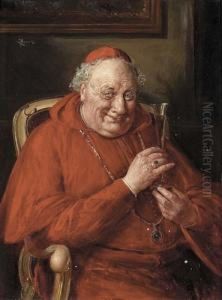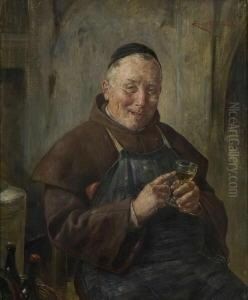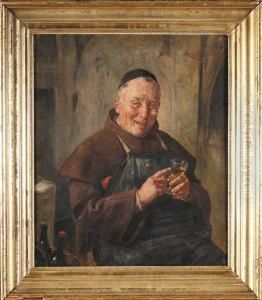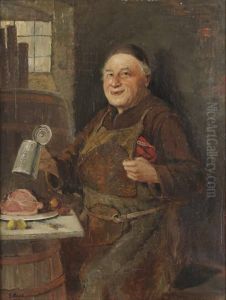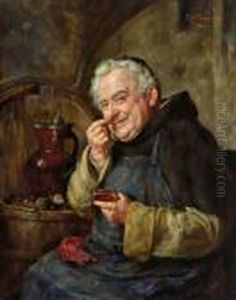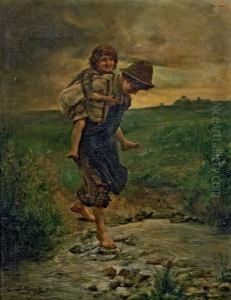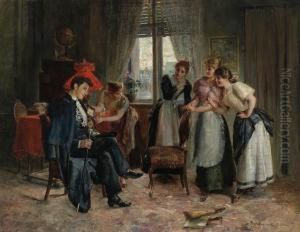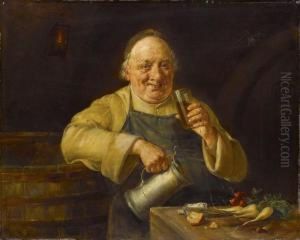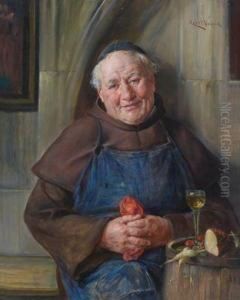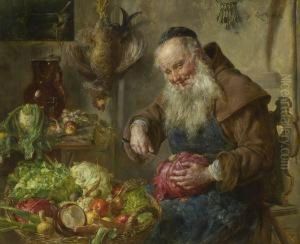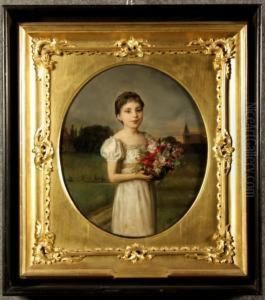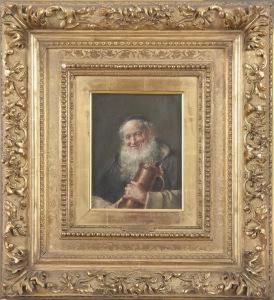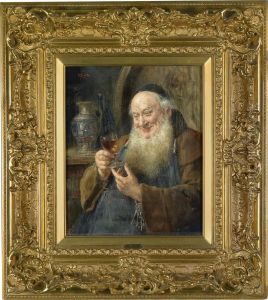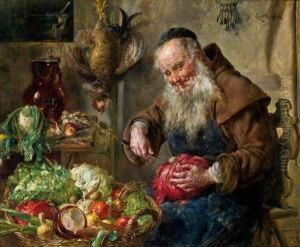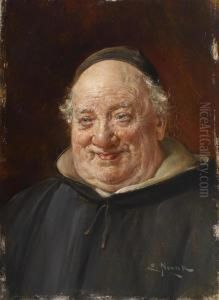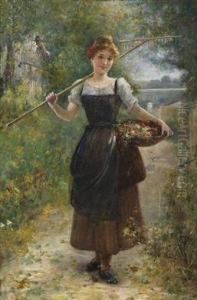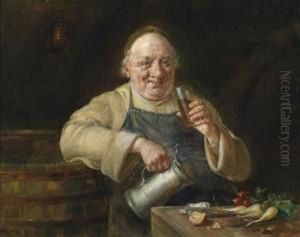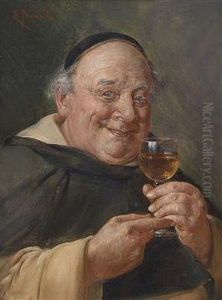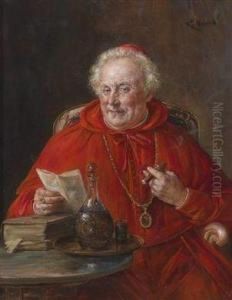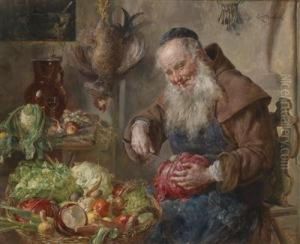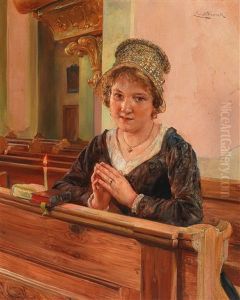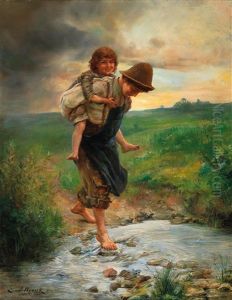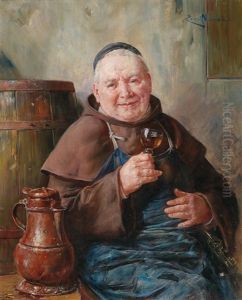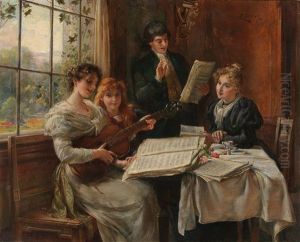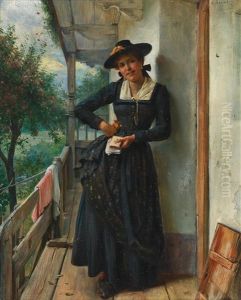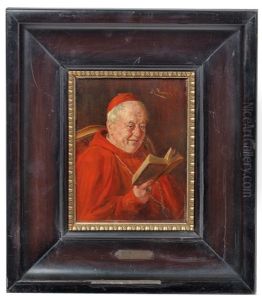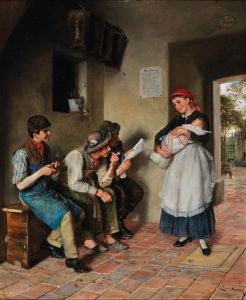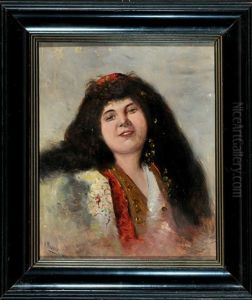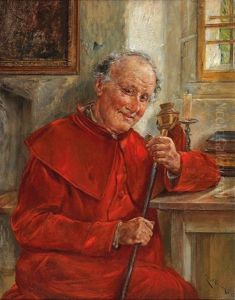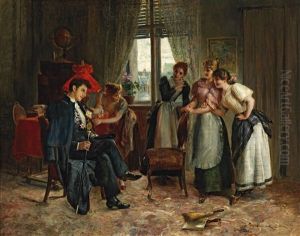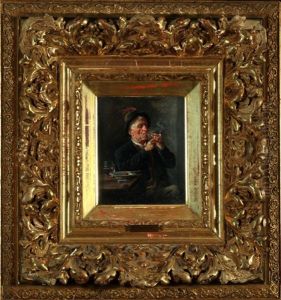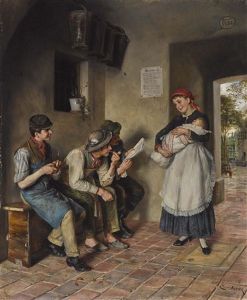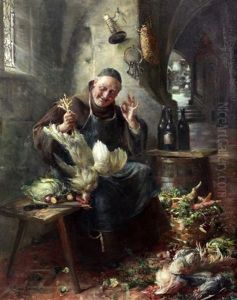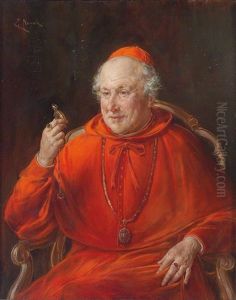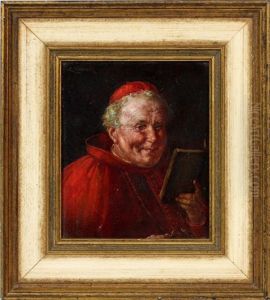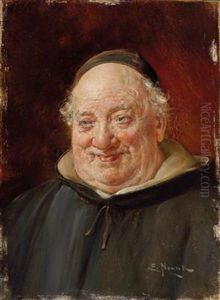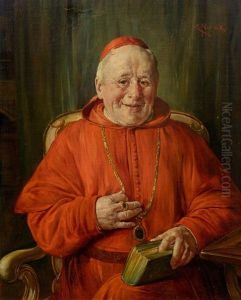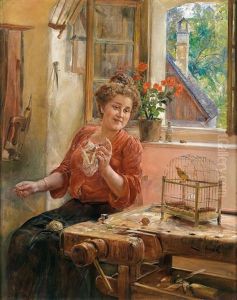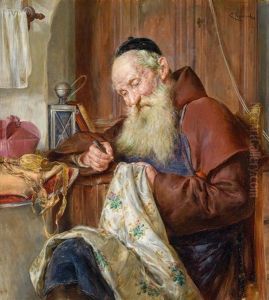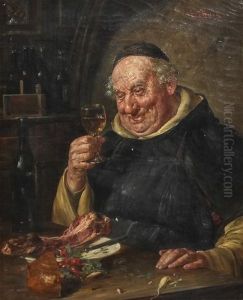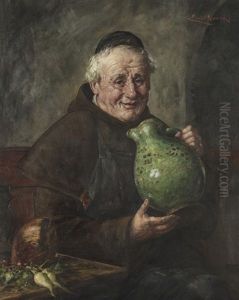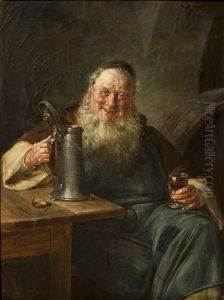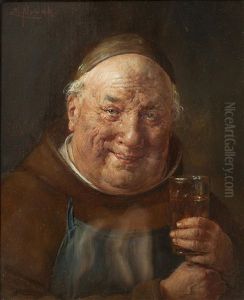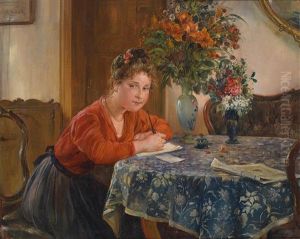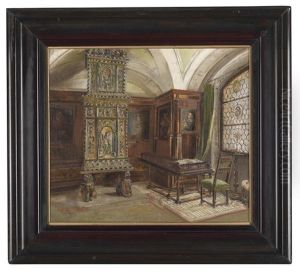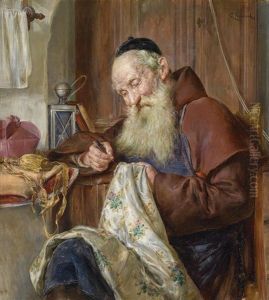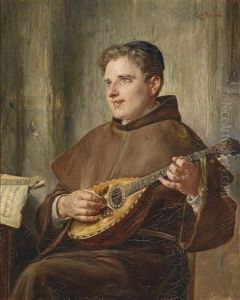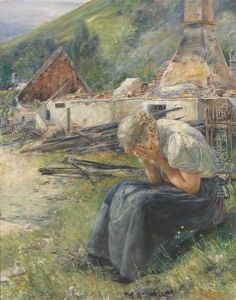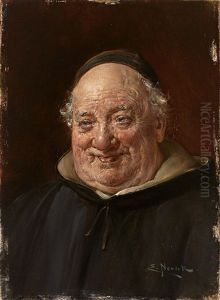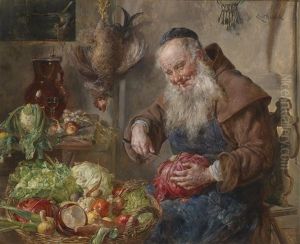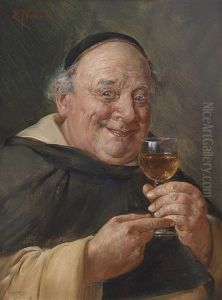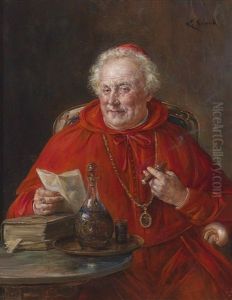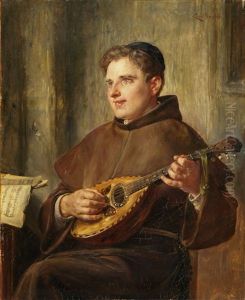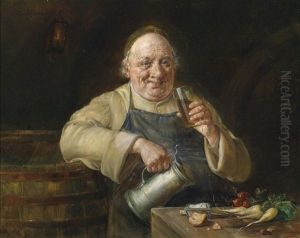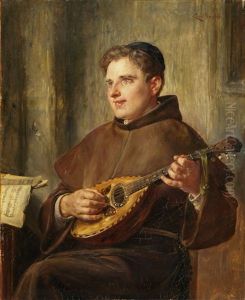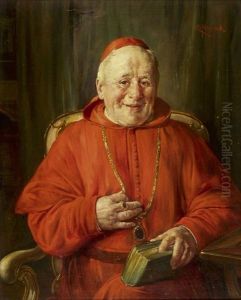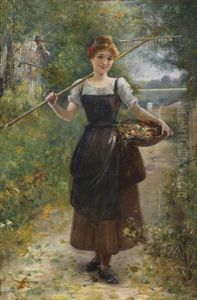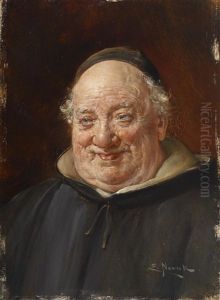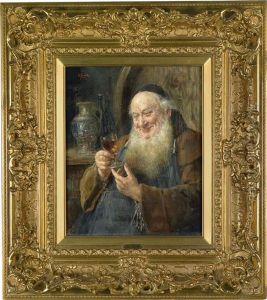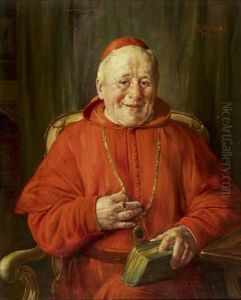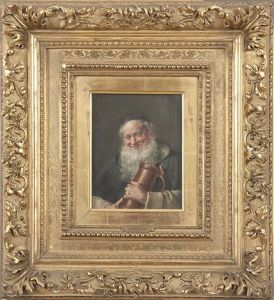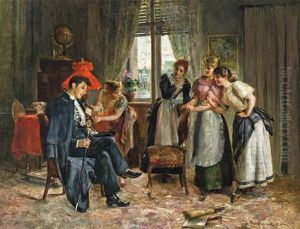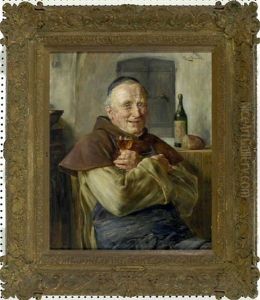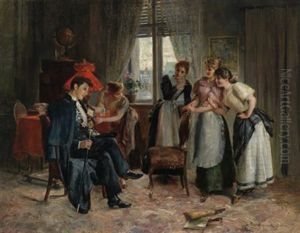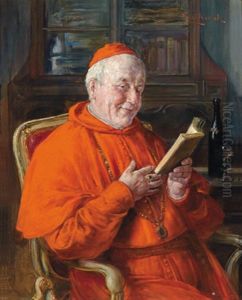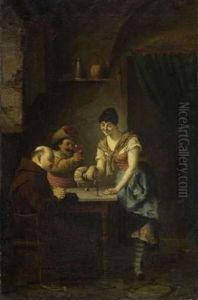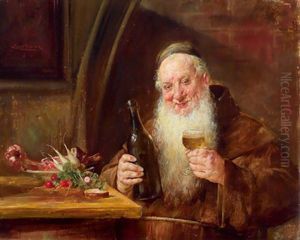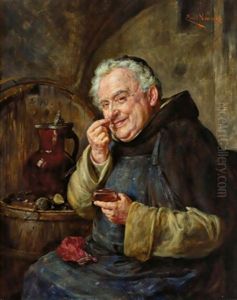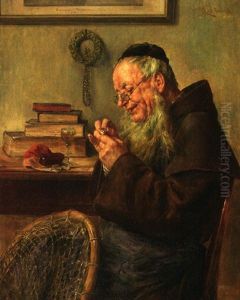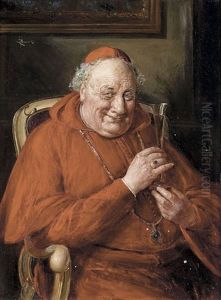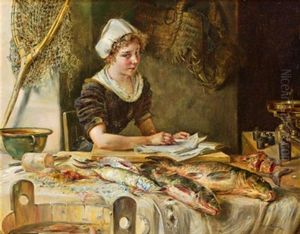Ernst Nowak Paintings
Ernst Nowak was an Austrian painter, born in 1851 in Brno, which was then part of the Austrian Empire and is now in the Czech Republic. He showed an early interest in art, which led him to pursue his passion for painting. Nowak's educational journey in art began at the Academy of Fine Arts in Vienna, where he was profoundly influenced by the teaching of Christian Griepenkerl, a prominent figure in the academic art world of the time. This education grounded Nowak in the principles of academic painting, but he would go on to develop a style that also embraced elements of Impressionism and Realism.
Throughout his career, Ernst Nowak became well known for his genre paintings, landscapes, and still lifes. His works often depicted rural life in Austria, capturing the essence of the countryside with a delicate interplay of light and color that showed the influence of Impressionism. However, his adherence to the detailed portrayal of his subjects and the narrative quality of his genre scenes remained rooted in the Realist tradition. This blend of styles made his work appealing to a broad audience, both in Austria and beyond.
Nowak's landscapes and genre scenes were particularly celebrated for their vibrant colors and the skill with which he captured the changing seasons of the Austrian countryside. His ability to depict the simplicity and beauty of rural life, with its traditional customs and the daily lives of its people, earned him a special place among the artists of his time. He participated in numerous exhibitions and gained considerable recognition, including awards and honors, which helped to solidify his reputation in the art world.
Despite his success, Ernst Nowak's life and work were not widely documented, as was the case with many artists of his era whose fame did not reach the international prominence of some of their contemporaries. However, his contributions to Austrian art during the late 19th and early 20th centuries have continued to be appreciated by art historians and collectors. His paintings remain in collections and museums in Austria and are valued for their historical as well as aesthetic qualities.
Ernst Nowak passed away in 1919, leaving behind a legacy that, while perhaps not as widely recognized as some of his peers, represents an important chapter in the development of Austrian painting at the turn of the century. His works continue to be studied and admired for their unique blend of realism and impressionism, capturing a bygone era with beauty and authenticity.
